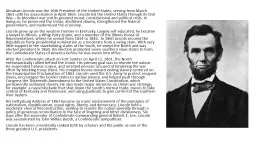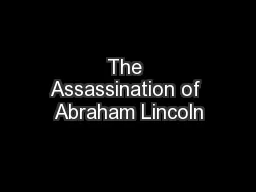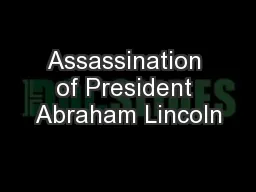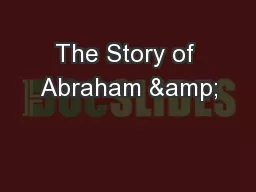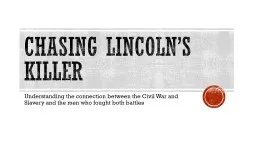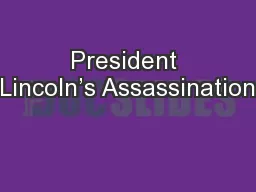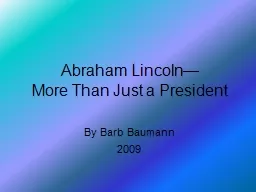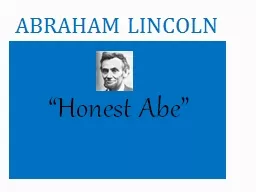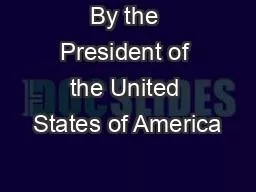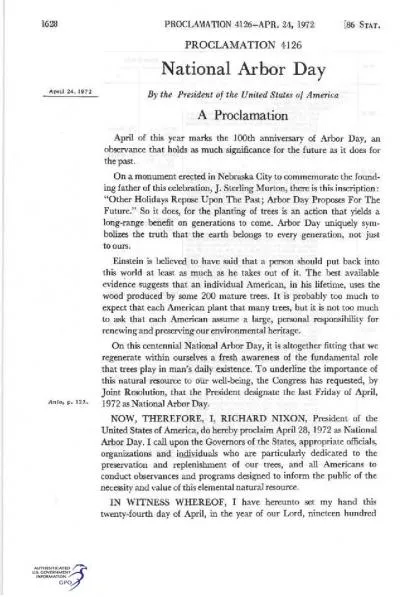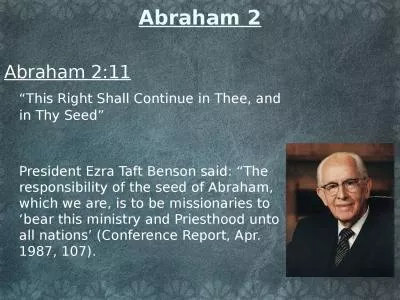PPT-Abraham Lincoln was the 16th President of the United States
Author : yoshiko-marsland | Published Date : 2017-04-08
Lincoln grew up on the western frontier in Kentucky Largely selfeducated he became a lawyer in Illinois a Whig Party leader and a member of the Illinois House of
Presentation Embed Code
Download Presentation
Download Presentation The PPT/PDF document "Abraham Lincoln was the 16th President o..." is the property of its rightful owner. Permission is granted to download and print the materials on this website for personal, non-commercial use only, and to display it on your personal computer provided you do not modify the materials and that you retain all copyright notices contained in the materials. By downloading content from our website, you accept the terms of this agreement.
Abraham Lincoln was the 16th President of the United States: Transcript
Download Rules Of Document
"Abraham Lincoln was the 16th President of the United States"The content belongs to its owner. You may download and print it for personal use, without modification, and keep all copyright notices. By downloading, you agree to these terms.
Related Documents

